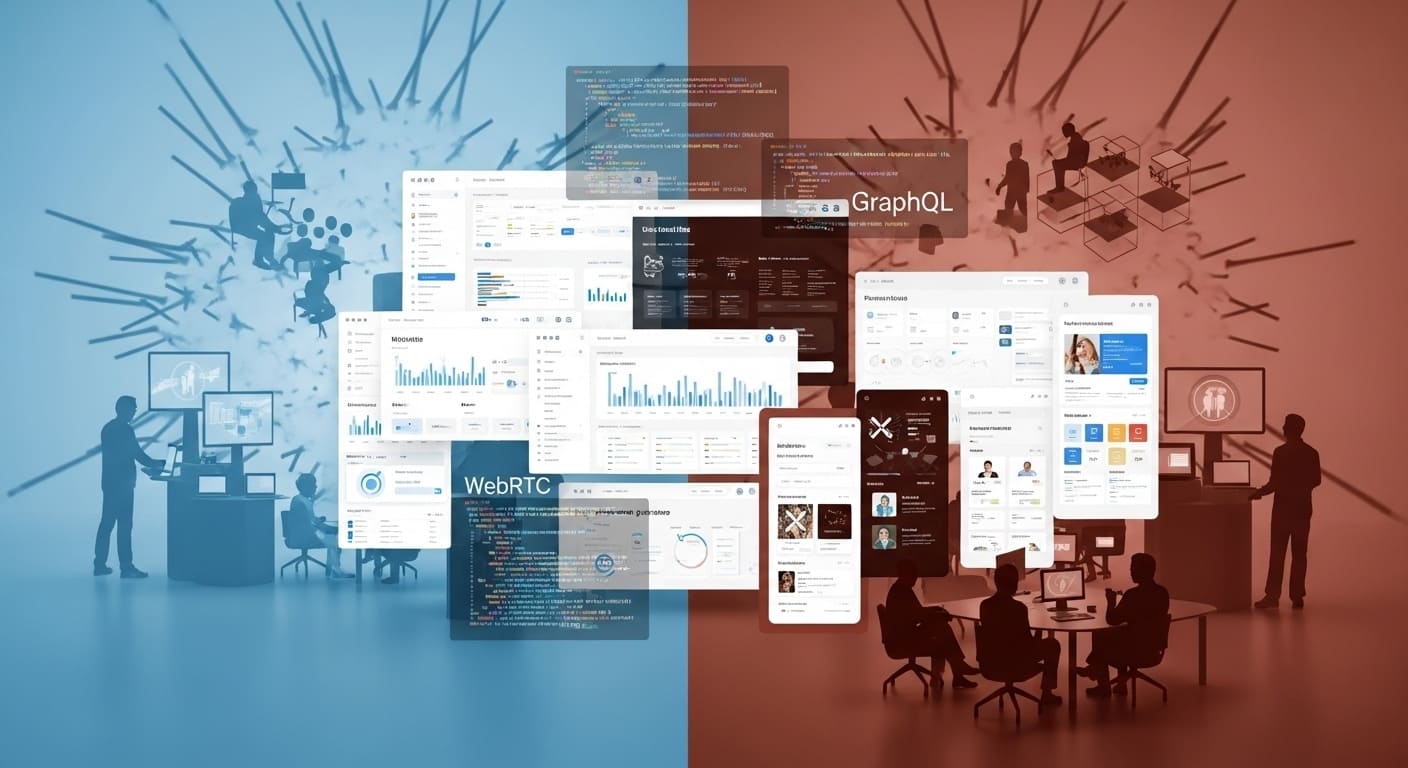This article explains how a DevOps culture is essential for improving software quality and delivery speed. It details that by breaking down silos between development and operations teams, DevOps creates a more collaborative and efficient workflow. The guide explores core CI/CD benefits, such as automating the build, test, and release process, which enables faster, more frequent deployments. It also covers how integrating automated testing early in the development cycle a practice known as “shifting left”, catches bugs sooner and reduces the cost of fixes. For businesses, adopting DevOps is presented as a crucial strategy for achieving a significant competitive advantage through superior product quality and market agility.
In today’s competitive landscape, the ability to deliver high-quality software at high speed is not just an advantage; it’s a requirement for survival. For years, businesses have been forced to move fast and build a stable product. The traditional, siloed approach to software development meant that speed often came at the expense of quality. Today, a new philosophy has broken this paradigm: DevOps. A mature approach to DevOps software quality is the key to simultaneously achieving speed and stability.
What is DevOps?
DevOps is a cultural philosophy, supported by a set of practices and tools, that breaks down the traditional barriers between software development (Dev) and IT operations (Ops). These two teams often had conflicting goals in the past: developers were incentivised to create new features quickly, while operations were incentivized to maintain stability, which meant resisting change. This friction was a major bottleneck.
DevOps unifies these teams around a shared goal: to deliver value to the customer quickly and reliably. This is achieved through collaboration, automation, and a focus on the entire software delivery lifecycle. A key goal of professional DevOps Services is to implement this transformative culture.
The Core Pillars of DevOps Software Quality
The DevOps methodology is built on several core practices that directly contribute to higher quality and faster delivery.
Continuous Integration and Continuous Delivery (CI/CD)
This is the engine of DevOps. A CI/CD pipeline automates the process of building, testing, and deploying code.
- Continuous Integration (CI): It is a software development practice where developers frequently merge their code changes into a central repository, after which automated builds and tests are run to quickly catch errors.
- Continuous Delivery (CD): After the code passes the automated tests, it is automatically deployed to a staging environment and can be released to production with the push of a button. The primary CI/CD benefits are a dramatic reduction in manual work and a much faster, more reliable release process.
Automated Testing: The “Shift Left” Principle
One of the most powerful aspects of improving DevOps software quality is the emphasis on automated testing. The “shift left” principle means moving testing activities earlier in the development lifecycle. Instead of waiting for a separate QA team to test the application at the end, tests are automated and run with every single code change. This means bugs are caught and fixed when they are small, simple, and cheap to resolve, rather than when they have become deeply embedded in the codebase.
Infrastructure as Code (IaC)
IaC is the practice of managing your infrastructure (servers, databases, networks) through code rather than manual configuration. This ensures that your testing, staging, and production environments are identical, which eliminates the common “it worked on my machine” problem. It makes your infrastructure repeatable and reliable, a core component of modern Cloud Infrastructure Services.
How DevOps Delivers Both Speed and Quality
It can seem illogical that moving faster can lead to a higher-quality product, but DevOps makes this possible.
More minor, More Frequent Releases
Instead of large, risky, biannual releases, DevOps enables small, incremental updates that can be deployed daily or hourly. These small changes are easier to test and troubleshoot and have a much lower risk of causing a major outage, one of the key CI/CD benefits.
Faster Feedback Loops
Automating the delivery pipeline will shorten the feedback loop between developers and end-users. If a bug does make it to production, you can quickly identify the small change that caused it, fix it, and deploy a patch in minutes, not weeks. This agility is a massive competitive advantage, especially for businesses offering SaaS Development Services.
A Culture of Shared Responsibility
In a DevOps culture, everyone is responsible for quality. Developers are not just “throwing code over the wall” to the Ops team. Because they are part of the same unified team, they are also responsible for the performance and stability of the application in production. This shared ownership leads to a much higher standard of work.
Our DevOps Services in Action: Case Studies
Case Study 1: A FinTech Company’s Race to Market
- The Challenge: A FinTech startup was struggling to release new features faster than its competitors. Their manual deployment process was slow, error-prone, and required an entire weekend for each release.
- Our Solution: We implemented a complete DevOps Automation strategy, building a fully automated CI/CD pipeline. This included integrating a comprehensive suite of automated testing to ensure code quality at every stage.
- The Result: The company’s deployment time went from over 48 hours to just 15 minutes. They were able to release new features multiple times a day with confidence, allowing them to out-innovate their rivals and capture significant market share.
Case Study 2: An eCommerce Platform’s Stability Overhaul
- The Challenge: A large eCommerce platform was suffering from frequent outages, especially after new releases. The lack of reliable testing meant that bugs were constantly making their way into production.
- Our Solution: We introduced the “shift left” principle, helping them build a culture of automated testing. We integrated unit, integration, and end-to-end tests directly into their CI pipeline, ensuring that no code could be merged without passing a rigorous quality gate.
- The Result: The platform’s production bug rate dropped by 90%. The increased stability and reliability led to higher customer satisfaction and a measurable increase in conversion rates, proving the value of a focus on DevOps software quality.
Our Technology Stack for DevOps
We use a modern, powerful set of tools to build and manage robust delivery pipelines.
- CI/CD Tools: Jenkins, GitLab CI, CircleCI, Azure DevOps
- Containerization: Docker, Kubernetes
- Configuration Management: Ansible, Puppet
- Infrastructure as Code: Terraform, AWS CloudFormation
- Monitoring: Prometheus, Grafana, Datadog
Conclusion
DevOps software quality is not a separate practice but the natural outcome of a well-executed DevOps culture. By breaking down silos, embracing automation, and creating fast feedback loops, you can build a system that delivers better software, faster. The CI/CD benefits are clear: increased market agility, higher customer satisfaction, and a more innovative and motivated engineering team.
Ready to transform your software delivery process? Connect with Wildnet Edge. Our AI-first approach enhances our DevOps practice, using intelligent analytics to optimise your pipeline and predict potential issues, ensuring your Software Development Solutions are not just fast, but also smart.
FAQs
DevOps impacts the bottom line in several ways: it reduces the cost of fixing bugs by catching them earlier, it lowers operational costs through automation, and it accelerates the delivery of revenue-generating features to the market.
The technical part involves implementing tools. The cultural part requires changing how people have worked for years. It means breaking down departmental silos, fostering a culture of shared responsibility, and encouraging collaboration, which can be a significant change management challenge.
The best first step is to automate your testing process. Building a suite of automated testing provides an immediate quality improvement and is the foundational building block for a full CI/CD pipeline.
Startups and small businesses can benefit immensely from DevOps. A DevOps approach allows a small team to be incredibly efficient and productive. By automating their release process, a small team can compete with much larger organizations in terms of delivery speed and quality.
They are very similar. In Continuous Delivery, the code is automatically deployed to a staging environment after passing tests, and a human makes the final decision to push it to production. In Continuous Deployment, if the code passes all automated tests, it is automatically deployed to production without any human intervention.
Success is measured with the DORA metrics, which are the industry standard. They are: Deployment Frequency (how often you release), Lead Time for Changes (how long it takes from code commit to production), Mean Time to Recovery (how quickly you can recover from a failure), and Change Failure Rate (what percentage of your releases cause a failure).
Yes. While DevOps and the cloud are a perfect match, DevOps Automation, collaboration, and CI/CD principles can be applied to any environment, including on-premise data centres. The goal is to automate your delivery pipeline, wherever it may be.

Nitin Agarwal is a veteran in custom software development. He is fascinated by how software can turn ideas into real-world solutions. With extensive experience designing scalable and efficient systems, he focuses on creating software that delivers tangible results. Nitin enjoys exploring emerging technologies, taking on challenging projects, and mentoring teams to bring ideas to life. He believes that good software is not just about code; it’s about understanding problems and creating value for users. For him, great software combines thoughtful design, clever engineering, and a clear understanding of the problems it’s meant to solve.
 sales@wildnetedge.com
sales@wildnetedge.com +1 (212) 901 8616
+1 (212) 901 8616 +1 (437) 225-7733
+1 (437) 225-7733































